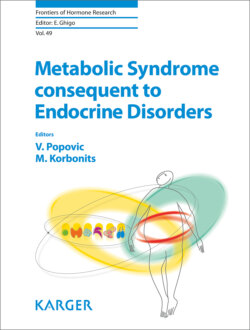Читать книгу Metabolic Syndrome Consequent to Endocrine Disorders - Группа авторов - Страница 15
Impact of GHD and GHRT on Components of MetS in Patients with Hypopituitarism
ОглавлениеPatients with adult GHD exhibit a well-defined clinical phenotype including reduced lean body mass, muscle strength and exercise capacity, excess abdominal fat mass with insulin resistance and dyslipidemia, decreased bone mineral density, decreased energy, and quality of life. Adverse cardiometabolic profile and increased prevalence of MetS in GHD are typically characterized by clustering of risk factors including increased accumulation of visceral adipose tissue, insulin resistance, dyslipidemia with increased total cholesterol, LDL cholesterol, triglycerides, and decreased HDL cholesterol. GHD in adults is also associated with impaired endothelial function and fibrinolysis, increased adhesion and inflammatory markers, as well as some distinctive changes in cardiac function and morphology [27–79].
Pathogenesis of MetS in hypopituitary patients with GHD is depicted in Figure 1.
Isolated GHD (IGHD) provides the ideal model to characterize the influence of GHD per se without the confounding interferences from other pituitary hormone deficiencies or their treatment. The prevalence of IGHD is less than 10%. These patients may reflect those in whom a pituitary insult is evolving from a known or idiopathic cause [80, 81]. The study which compared patients with IGHD (n = 274) and MPHD (n = 2,594) from KIMS data base was unable to detect differences in serum lipid levels, glucose metabolism, fracture rate, and quality of life between the 2 groups of patients [80]. It has been shown that IGHD and MPHD patients have not only similar baseline clinical presentation and prevalence of MetS, but respond equally well to 2 years of GHRT [80]. Similar prevalence of MetS in hypopituitary patients with MPHD (43.1%) and IGHD (42.4%) was also confirmed in the recent study from KIMS database [5].
